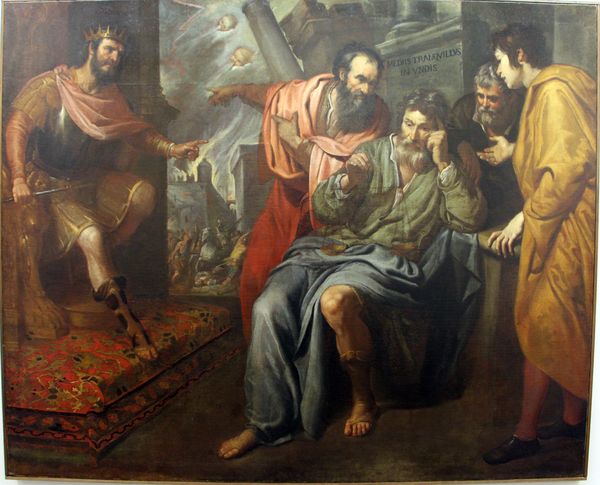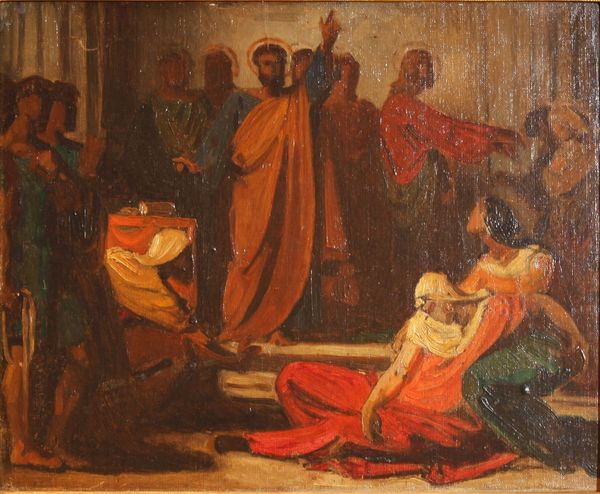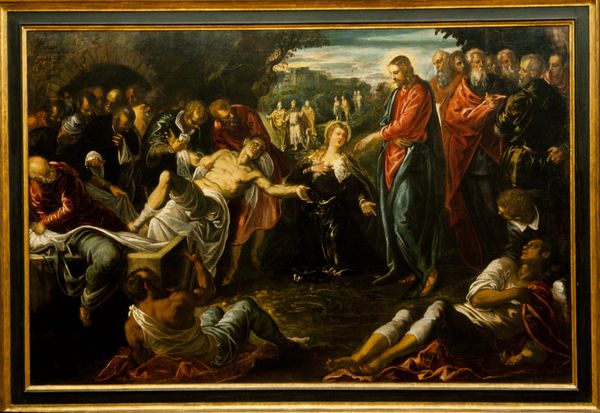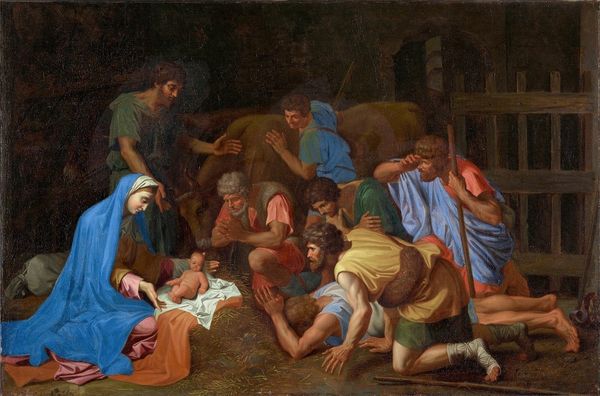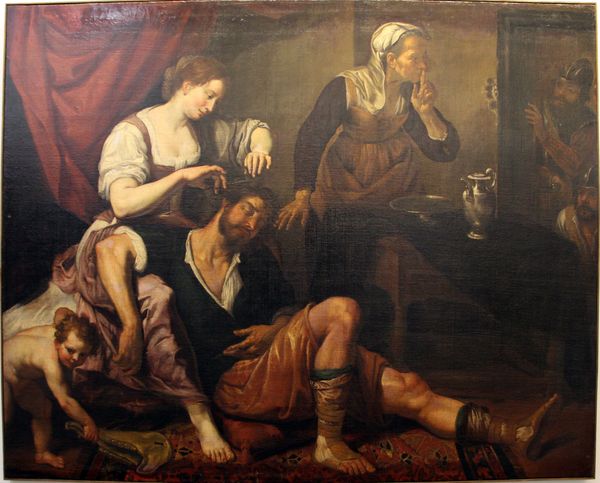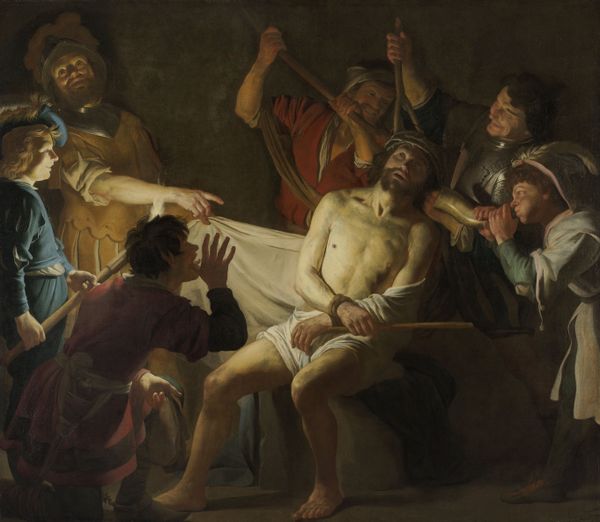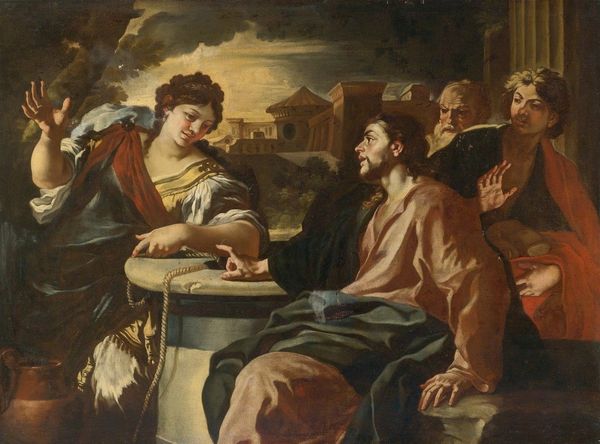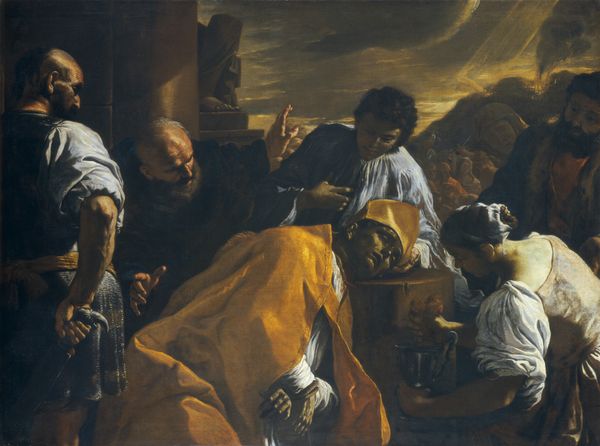
painting, oil-paint
#
portrait
#
baroque
#
painting
#
oil-paint
#
oil painting
#
genre-painting
#
italian-renaissance
#
portrait art
#
fine art portrait
Copyright: Public domain
Curator: Looking at this painting, my immediate reaction is one of somber drama, it's dark, both literally in its use of light, and figuratively, with the palpable sense of grief hanging in the air. Editor: This oil painting, attributed to Domenico Fiasella, and currently housed at the Palazzo Bianco in Genoa, is titled "Ezechia Morente," translating to "Dying Hezekiah." It depicts a scene of illness and desperation. Curator: Yes, you can almost feel the weight of worry. I’m particularly drawn to the figure in the bed – the almost desperate reaching out gesture with his right arm, conveying the desire for either comfort or perhaps more profoundly, deliverance. Editor: Consider the visual storytelling at play here. Fiasella sets this intensely intimate and painful moment within a grand, almost theatrical composition. Look at how the surrounding figures react – some in grief, some in supplication, others tending to the dying man. There is an attempt to depict a historical tableau with emotional directness. Curator: It's a very evocative image. The figure drinking from a glass in the foreground seems disconnected, yet his presence speaks volumes about attempts to delay the inevitable. To me, the symbols used are as old as time – light representing hope, the shadows, despair. Editor: I'd add that such artistic representations also serve social purposes. Public displays of intense emotion, and private religious anguish as moral instruction – it all interweaves during the baroque. Paintings like these were powerful vehicles for public instruction about piety and morality during the era. Curator: Do you find the absence of specific religious icons somewhat curious though? While the title explicitly points to a biblical narrative, the symbols present here appear intentionally universal – anguish, familial connection, and the collective struggle against mortality. Editor: That's interesting. It does prompt thoughts about accessibility. If religious iconography were too rigid or didactic, would that limit who this work could reach, what feelings it could stir? There’s a very conscious construction here. Curator: Definitely. It gives a sense of the deeply personal alongside the archetypal experience of loss. Thank you, I feel like I understand this work even more clearly now. Editor: Likewise, our journey into this piece has enriched my perception. It emphasizes how art’s public and private resonances always influence how it is perceived across time.
Comments
No comments
Be the first to comment and join the conversation on the ultimate creative platform.

